Estimated reading time: 5 minutes
A lot of people don’t think “organic” and “spray fruit trees” go together.
That’s because as soon as people hear the word “spray” they assume there are toxic chemicals involved. And honestly, in the conventional food-growing world, they usually are.
But actually, spraying is just a technique that can be used to apply lots of different things to your fruit trees.
Related Articles
How to avoid leaf curl by watching for spring
Learning how to avoid leaf curl is all in the timing. The key time to pay attention is very early spring, earlier than you think!
Learning from other fruit growers
Having a peer group of like-minded gardeners to spend time with is one of the best ways to learn about fruit growing.
Why does biodiversity matter?
Building biodiversity in your garden means you’ll grow healthier plants with fewer pest and disease problems.
It’s definitely better to aim for a healthy, biodiverse system that keeps itself in balance without any spraying for pests and diseases at all.
However, there are actually a couple of sprays you can use that won’t do damage. These are the ones that certified organic growers use (under strict organic standards, of course).
Usually, when people think of spraying their fruit trees, they’re thinking about preventing or treating pests or diseases.
But spraying can also be a great technique for feeding your trees.
How can spraying feed your fruit trees?
Spraying to give your trees nutrition (called “foliar spraying” or “foliar fertilising”) is a different kettle of fish altogether. In effect, it’s a way to feed your fruit tree through its leaves.
Foliar fertilising can be a quick, effective way of giving your trees a nutrition boost or correcting a deficiency.
The best time to do foliar fertilising is during the fruit season, when the trees are at their most active. By autumn, when the leaves are starting to change colour it becomes much less effective.
It’s important to remember that the main place your trees get their nutrition is from the soil. Foliar sprays can’t replace or make up for poor soil or an inadequate soil health program.
Foliar fertilisation is a great tool in your toolbox, but it’s not something we routinely recommend for most home growers, and it’s not an autumn job.
When’s the best time to spray for pests and diseases?
The main sprays we use on the farm are allowable organic fungicides. In Australia, that means a little bit of copper (of the right formulation), and elemental sulphur.
In a wet spring, they can make a huge difference in preventing some particularly nasty fungal diseases.
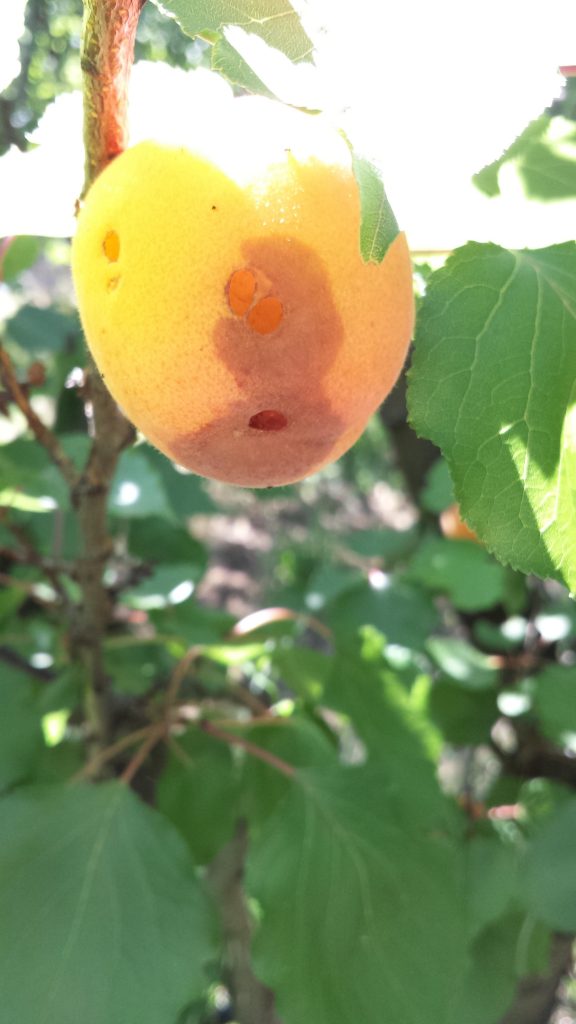
You may have seen recommendations to spray fungicides on fruit trees after the crop has been picked in autumn. It’s often recommended as a way to clean up any residual disease, but it’s a bit more controversial.
So, how do you know if your fruit trees really need an autumn fungicide?
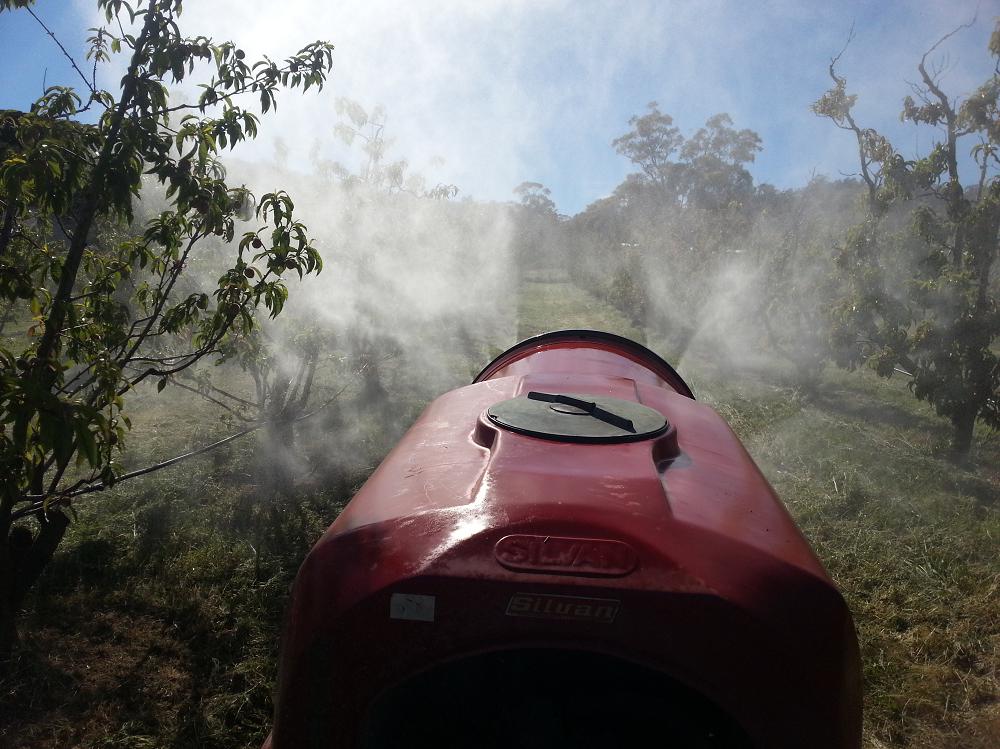
Get to know your disease
Truth is, each disease is different. It’s really worth identifying which diseases have been a problem for your trees in your garden, and understanding how they work.
Some diseases like leaf curl aren’t usually controlled with autumn spraying. But others like brown rot can benefit from an autumn spray of an organic fungicide.
And then there are other situations where spraying may help:
- If you’ve had a really bad outbreak of Black spot (Apple scab) on your apple trees, spraying with compost tea or worm castings can help them to break down before the following season;
- If you’ve a bad aphid or scale outbreak, spraying with winter oil (also called horticultural oil) can help to smother the eggs and prevent an outbreak next year
So we certainly don’t rule autumn spraying out.
It can be a useful part of an overall strategy for cleaning up some diseases and controlling some pests.
Spraying less is best
However, in most reasonably healthy trees, you don’t need to routinely use a fungicide at this time of year. And that’s a good thing because even organically allowable sprays can have an impact on the environment. They can particularly impact the soil.
We reckon it’s a good idea to keep spraying organic fungicides to the absolute minimum. And you should never use chemical fungicides, because it’s easy to damage your precious ecosystem.
Instead, strive for a really rich biodiverse garden, where natural immunity will be at its highest.
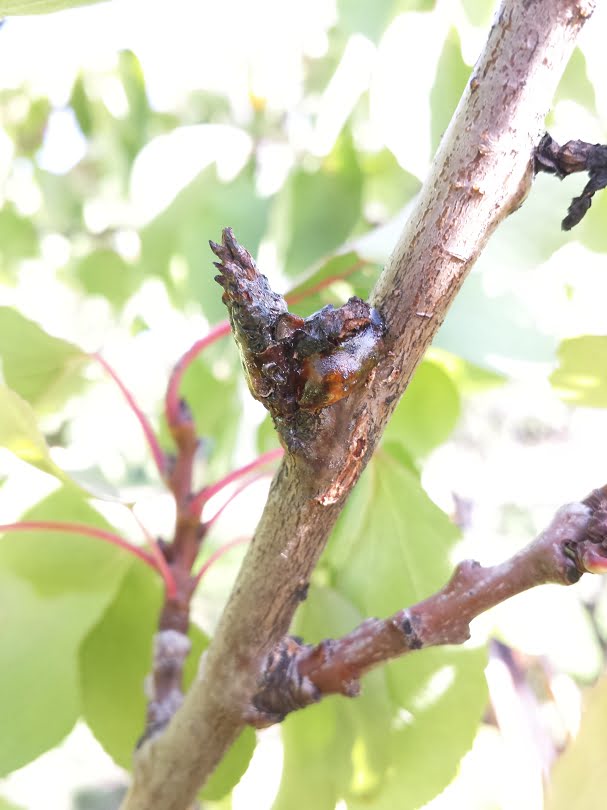
Rainy conditions lead to more spraying
It’s also important to take your local conditions into account. Fungal diseases love wet conditions, and if you’ve had a wet summer then your trees might have suffered badly from disease. In that case, an autumn fungicide might be a good idea to help reduce the fungal load.
However, if you’ve had a dry summer then it’s likely that there’s been very little fungal disease around.
You can often manage your hygiene just by pruning any diseased wood out of the tree. Then make sure you take it away from the tree altogether and dispose of it elsewhere.
But there’s no need to put on a spray at all.
Excellent!
Related Articles
How to avoid leaf curl by watching for spring
Learning how to avoid leaf curl is all in the timing. The key time to pay attention is very early spring, earlier than you think!
Learning from other fruit growers
Having a peer group of like-minded gardeners to spend time with is one of the best ways to learn about fruit growing.
Why does biodiversity matter?
Building biodiversity in your garden means you’ll grow healthier plants with fewer pest and disease problems.

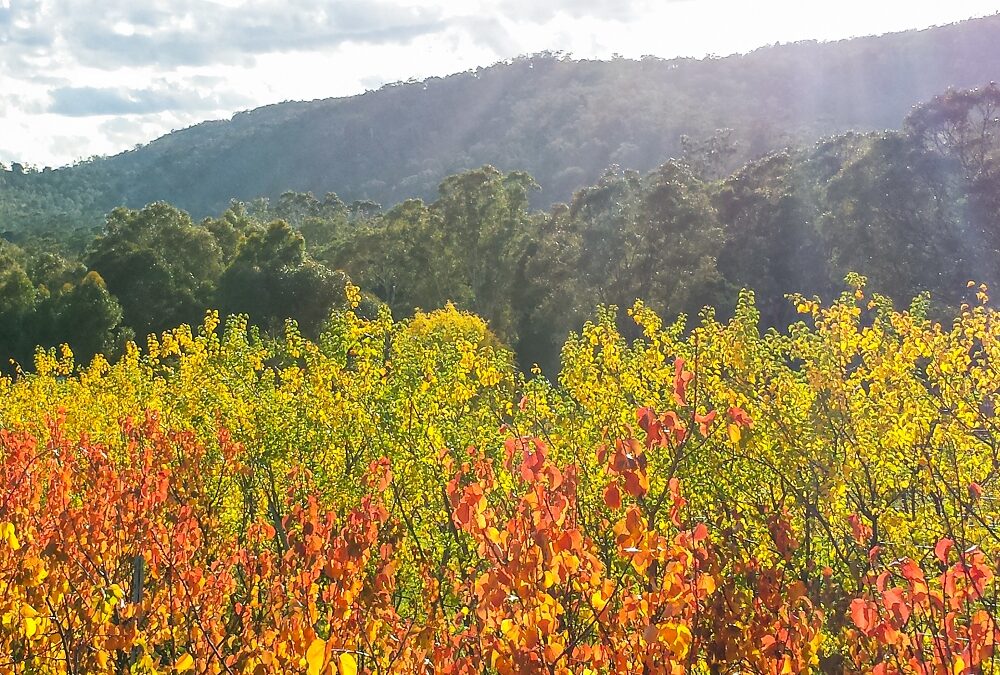


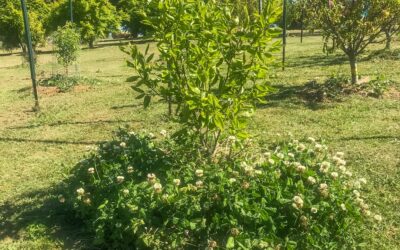


We have had rain in Feb and lost all nectarines, many plums and some peaches to brown rot.. and no rain since. So I expect we are likely candidates for autumn spraying?
Hi Robbie, thanks for getting in touch. Yes, under those circumstances you’d be a candidate for an autumn spray of organic fungicide – at about 50% leaf fall should do the trick.
We have what looks to be powdery mildew on section on the south side of our Granny Smith tree. It is on the branches and leaves in that one section. We have finished picking. I have your book: What’s that Spot. We had drape netting on the tree and I read that we need to open prune to allow good air flow. Should we open up the tree now? Feb and March were unusually humid here in South Gippsland. With heavy rain will the powdery mildew spores fall down to the soil? Should we spray with a Copper Spray now? Is there anything else we should do now?
Hi Heather, If the tree canopy is really dense and doesn’t allow good air circulation then opening it up would be a good idea, but leave it till mid-winter when all the leaves have dropped. Spraying in autumn is not really needed unless the disease pressure has been very high, and yours doesn’t sound like it is in that category. Hope that helps!
We have apricot trees and nectarines and plums mixed in with an apple- cox orange pippin, egremont russet, red cleopatra.
we have struggled with peach leaf curl for the nectarine since it was planted and the apricots have had brown rot. I’ve read varying things about sensitivity of the cox orange pippin to sulfur so we have been using copper – we haven’t had great results despite 2 timed sprays.. ( winter and at bud swell) . not sure what we are doing wrong and can we use sulfur on the cox ( not deliberately – spray drift)
Hi Sharon, the danger period for apples is after green tip, and at the key time to be spraying to prevent leaf curl (budswell and 10 days later) the apples are not even close to green tip. Copper is more likely to cause a problem than sulphur, but is much more effective at preventing leaf curl and blossom blight (even then, the problem is just russeting, and it’s not a biggie if the fruit gets a little russetted, especially with those heritage varieties that are naturally russetted anyway). Throughout the season wettable sulphur is the spray of choice to be preventing brown rot on your apricots, and by that time there’s little risk of creating any more russetting on your apples. So, we’d say it’s much more important to control the fungal diseases and go ahead and use the organic fungicides as prescribed (there’s a recommended spray schedule to prevent them in this short course – https://growgreatfruit.com/product/keep-your-fruit-trees-free-from-disease/)